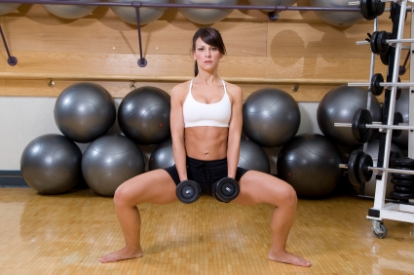There are types of workouts that are traditionally done without wearing shoes such as yoga and pilates. But have you ever heard or seen barefoot strength training?
Risky, isn’t it? Strength training and weightlifting require a lot of physicalities. Therefore you would need to have the proper attire such as shoes to avoid potential injuries.
But before you get sad that you may not be able to wear your compression socks and best socks for a workout, check out the following pros and cons of doing strength training barefoot.

Benefit: Improves Strength of the Feet
According to science, the composition of one’s foot contains 33 joints, 26 bones. As well as over a hundred muscles, tendons, and ligaments. As a foundation of our lower body, it is essential to enhance its strength to attain balance.
An expert from the NASM stressed that barefoot strength training improves the stability of muscles, which makes the foot and ankle stronger.
“Shoes give a lot of stability and support, but can also make the foot and ankle lazy, leading to injury or muscle imbalance. Strengthening the small stabilizing muscles of the feet can improve balance and overall performance.”
Burden: Not Ideal For Everyone
Not all feet are created equal. While there are people who can endure barefoot strength training, there are others who just cannot. Simply because their feet are not designed for it.
“What about people with little to no natural fat padding on the bottom of their feet? This can be painful and cause injury because there is nothing between the foot and floor for cushioning and shock absorbing,” said a podiatrist from Vionic Innovation Lab.
So before you jump int bandwagon, make sure you consult a doctor to see if this style fits you.

Benefit: Enhances Proprioception
Proprioception is described as our orientation and movement within the given space around us. Through barefoot training, this ability is improved as a person will be able to create more connection with the environment.
“It can improve overall muscle activation and isolation from our feet all the way up the chain to our head including your core.”
Burden: Exposure to Dirt
One of the obvious disadvantages of this type of training is you let your feet to be exposed more in dirt and bacteria. Something that can cause fungi and warts, if not properly addressed after workouts.

Benefit: Improves Weightlifting Technique
With your feet having direct contact with the floor or mats, you will be able to develop better grip to it. Therefore resulting in a better proprioception.
“If your feet can feel every bit of the floor, you will have better proprioception — a sense of your body in space and balance — which is a major plus.”
Burden: Injury-prone
You have to be extra cautious while doing barefoot strength training as the chances of sustaining an injury are higher. It is already painful when you drop a weight to your foot with your shoes on. How much more would it hurt if you are barefoot?
